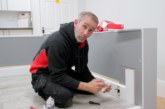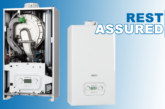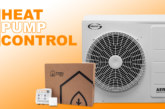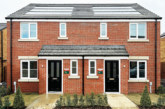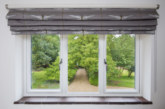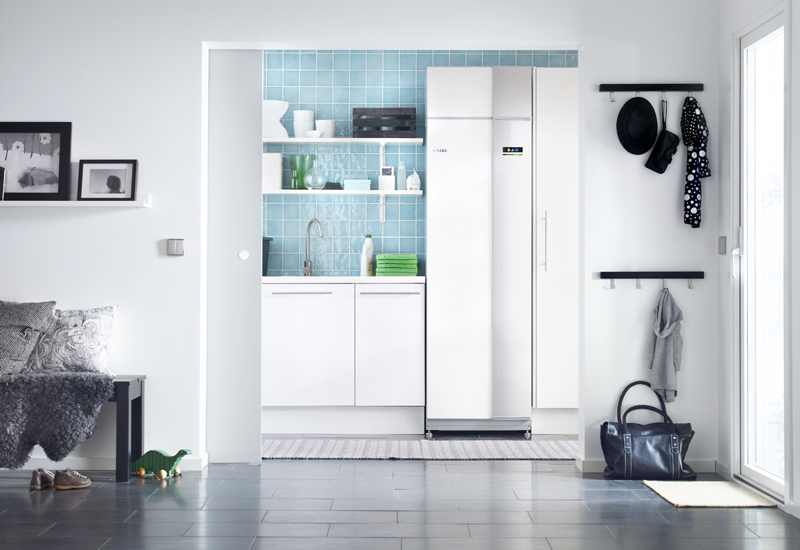
Robin Adderley, Sales and Marketing Director at NIBE, makes the case for adding value to domestic new-build projects with renewable heat. Here he explains what developers need to know about the heat pump market to turn opportunity into profit.
When it comes to new-build housing, most developers are well-versed in the various ways to boost a property’s appeal – and therefore its potential price tag – to prospective buyers. The addition of high-spec kitchens and bathrooms, for instance, is a universally popular (and effective) one – and with their visual merits immediately obvious to a buyer upon viewing a home, it’s easy to see why.
What some developers may be overlooking, however, is just how big a selling point a state-of-the-art renewable heating system, such as a heat pump, can be. After all, super-efficient heat pumps have the ability to slash ongoing household energy bills and carbon emissions, not to mention offer a comfortable indoor environment and lasting energy security.
What’s more, recent technological advancements within this fast-paced market – from smart controls to all-in-one systems offering heating, hot water and ventilation – are highlighting heat pumps as a user-friendly, future-ready investment for the long term. But what do developers need to know about the market and the products driving it to secure the best returns for their projects?
Pump up your knowledge
First things first, it’s important to have a good grasp of the technologies on the market. There are three main types of heat pumps available, each with its own unique set of capabilities – as this whistle-stop guide shows:
- Air source heat pumps (ASHPs) operate in a similar way to a fridge, but in reverse. They collect air from outside a property and feed it through a heat exchange system to provide reliable, efficient and cost-effective space heating and hot water
- Exhaust air heat pumps (EAHPs) work by harnessing wasted heat from a property’s wet rooms (e.g. kitchens and bathrooms) to efficiently meet its heating and hot water demands – while simultaneously providing it with a supply of clean, fresh air for ventilation purposes
- Ground source heat pumps (GSHPs) use the natural energy stored underground (in soil, rock or lake) as a heat source – providing sustainable heating and hot water for both domestic and commercial applications
Maximise potential
Beyond the basics of what heat pumps have to offer (i.e. efficient, reliable heat and hot water), there are a host of additional benefits of which savvy developers should stay abreast. For example, as well as ensuring full heating comfort, EAHPs are also designed to provide effective ventilation. This has made them a particularly popular solution for new-build homes, which are becoming increasingly airtight in line with Building Regulations. Proper ventilation also helps to improve indoor air quality by protecting against issues like damp and mould, which is an extra health benefit. From this perspective, it makes perfect sense to invest in a technology that can fulfil both functions.
In recent years, another major focus for manufacturers has been making controls as simple as possible for domestic users, which is good news for developers and buyers alike. NIBE has developed Uplink: an advanced online monitoring tool and app, which allows end users to control their heating and hot water setup remotely (via a computer, tablet or smartphone). NIBE Uplink also gives heat pump professionals access to useful data on the system’s current operating status and performance history, allowing them to address many issues without being on site.
In fact, the emergence of technology like this further highlights heat pumps as a solution that’s fit for the future. As smart homes continue to become the norm, there is a lot to be said for systems that are already set up to integrate with the smart grid and the Internet of Things. All of NIBE’s heat pumps and controls are smart-grid ready and Uplink-enabled.
Specify for success
As well as understanding the product landscape it is vital to remember that heat pumps (as with any technology) must be specified, designed, installed and operated correctly to ensure optimum performance and long-term end user satisfaction. With this in mind these are a few of the most vital considerations to bear in mind throughout the process:
- Insulation before generation
While different units work in different ways, all heat pumps have one thing in common: they will only perform to their full potential in well-insulated buildings. This is especially true of EAHPs, which are designed for use in smaller, airtight houses and flats. You should always carry out a full heat-loss calculation before installing any heat pump. This is a critical ingredient for correct heat emitter sizing, which is a very important factor when it comes to heat pump system design. Crucially, the heat-loss calculation also determines the required output of your technology.
- Professional choice
On the subject of installers, it’s pivotal that you work with someone who’s fully qualified to carry out the job at hand. All heat pump fitters should be accredited under the Microgeneration Certification Scheme (MCS) – as should the products they’re fitting. Not only does MCS accreditation demonstrate compliance with industry standards (both in terms of product quality and installer competence), but it’s also essential for installations to qualify for ongoing payments under the government’s Renewable Heat Incentive (RHI).
Single heat pump installations in new-build homes aren’t eligible for domestic RHI payments (with the exception of self-build projects). However, if a heat pump is installed in a heat network serving multiple new-build homes in a development, the system can qualify for payments under the commercial RHI. This is a big financial draw for developers considering a district heating system for their projects.
- End user education
Once the heat pump is up and running, it’s essential that those who’ll be using it on a daily basis know how to operate it correctly. In the UK, heat pumps are still a relatively new technology – and as such, it’s sensible to assume that most people are unfamiliar with how they work. Unlike the traditional on/off boilers that many residents are familiar with, the most economical and effective way to use a heat pump is to keep it in operation at all times. They are designed to run continuously (similarly to underfloor heating), thus providing a constant, comfortable temperature in the property, with residents needing to do very little to regulate and control the heating in their home.
To ensure end users know exactly how to operate their system for best results, at NIBE we strongly advise developers to champion consumer education in this area. All reputable manufacturers should provide clear, easy-to-understand how-to guides to make this as straightforward as possible (at NIBE, for example, we have produced a number of video user guides). It’s also a good idea to draw on installer knowledge.
Opportunity knocks
Heat pumps, and renewable heat in general, represent a smart, forward-looking choice for property developers: both as a long-term heating solution for residents, and as a compelling commercial asset. Staying well-informed of the market trends – as well as following best-practice specification guidance to ensure lasting performance – is the best way to add real value to current and future developments.
For more information, click here

